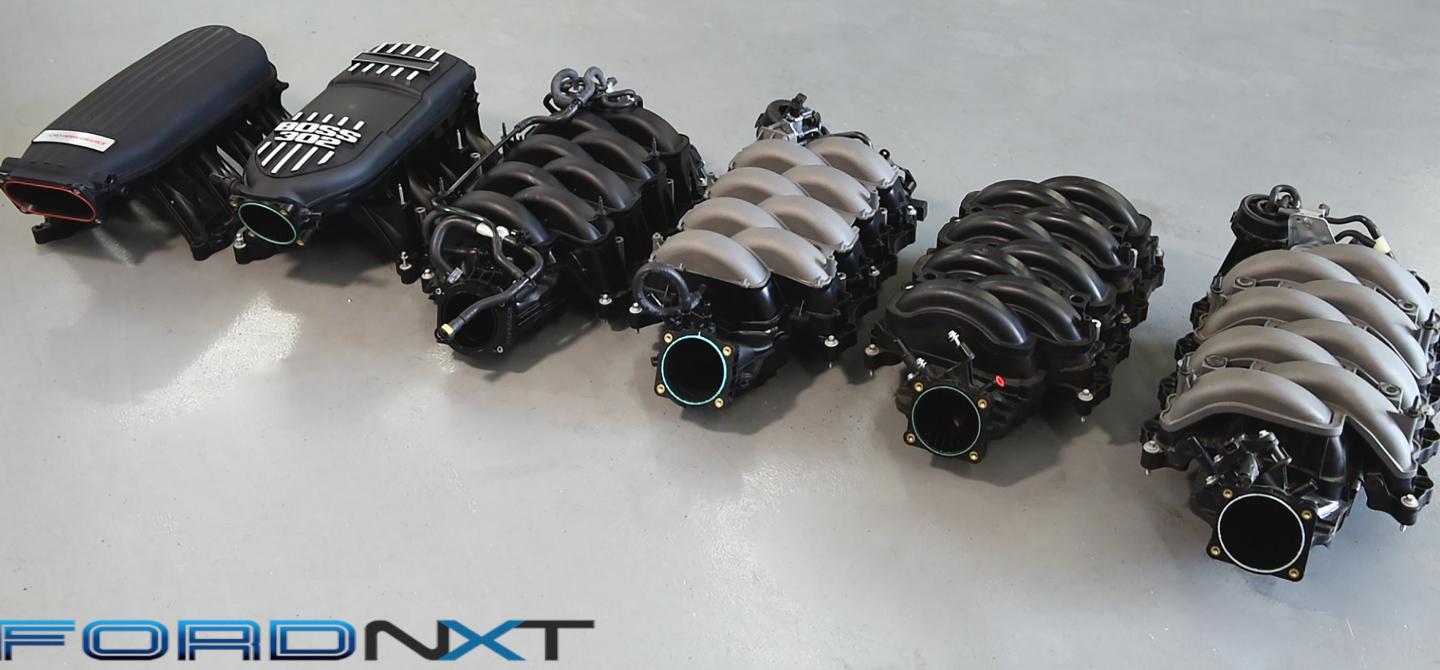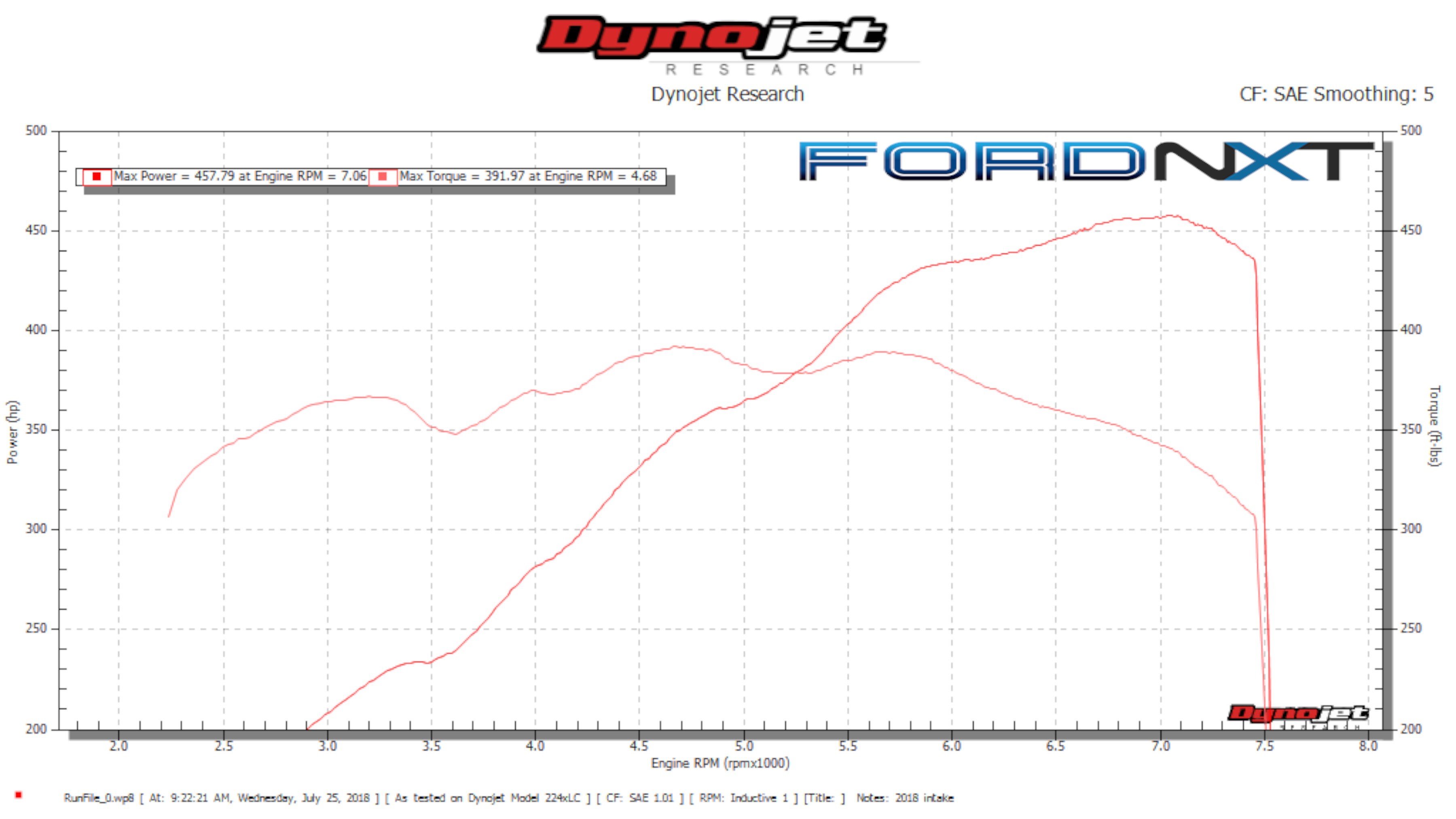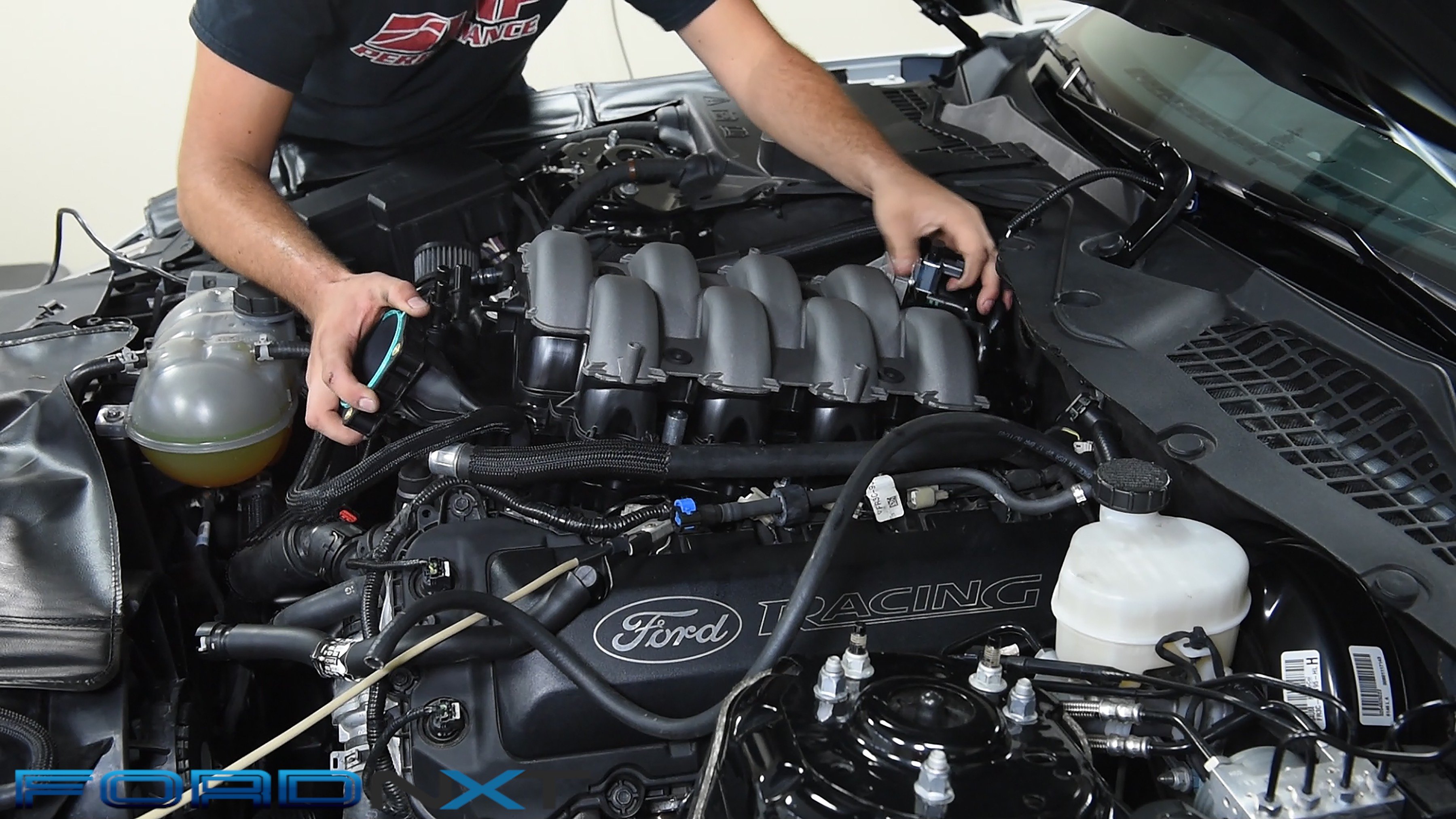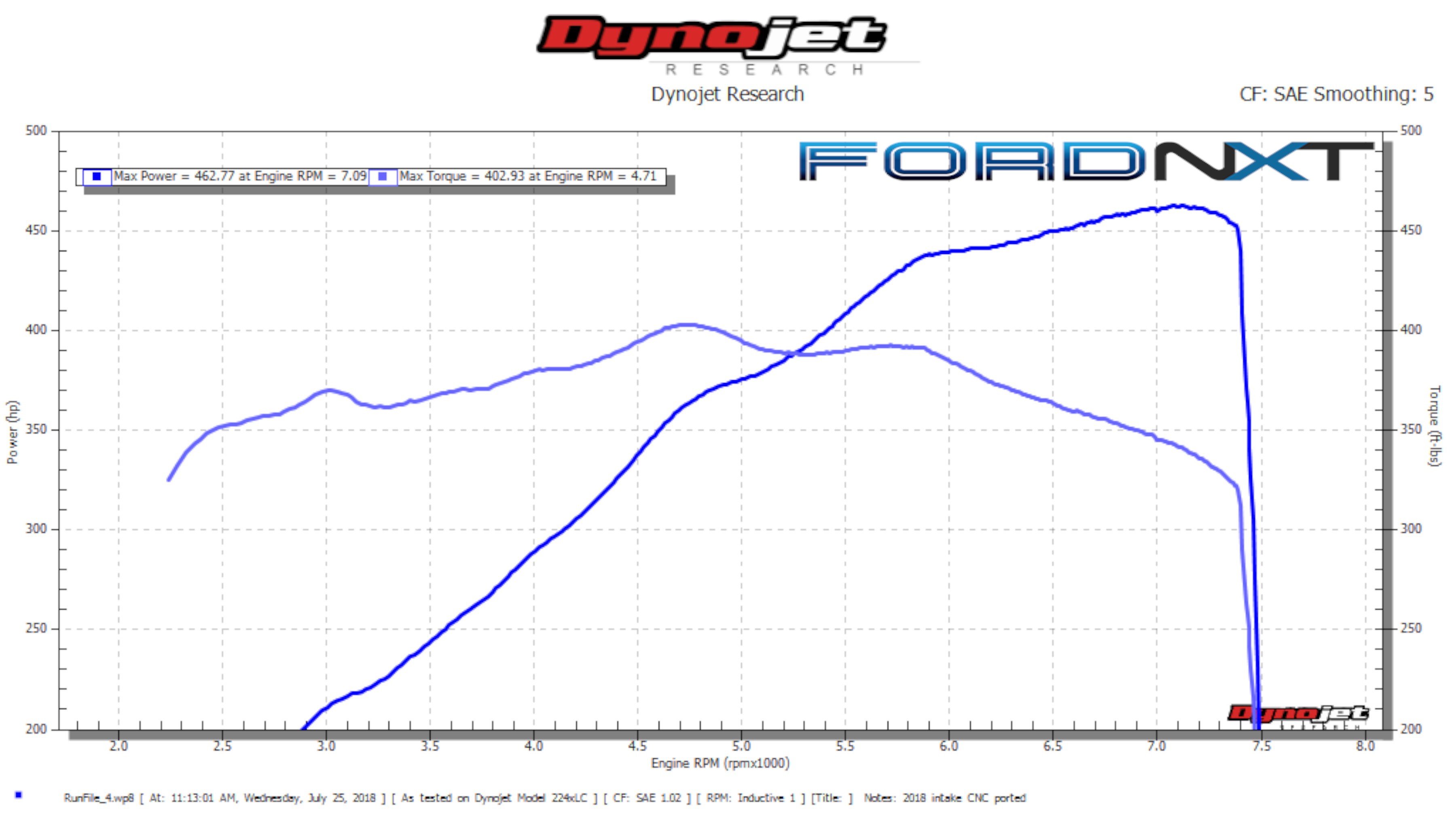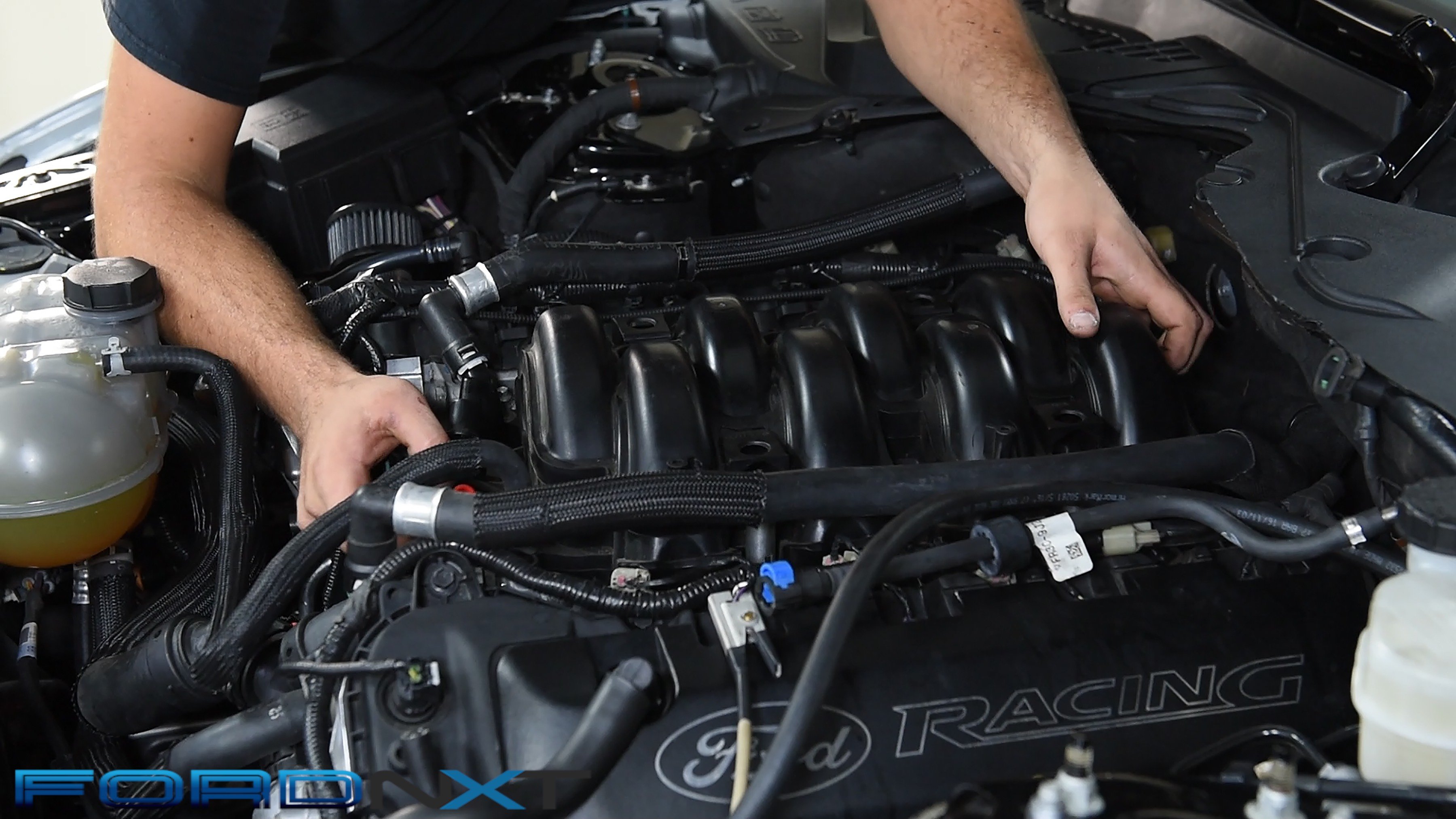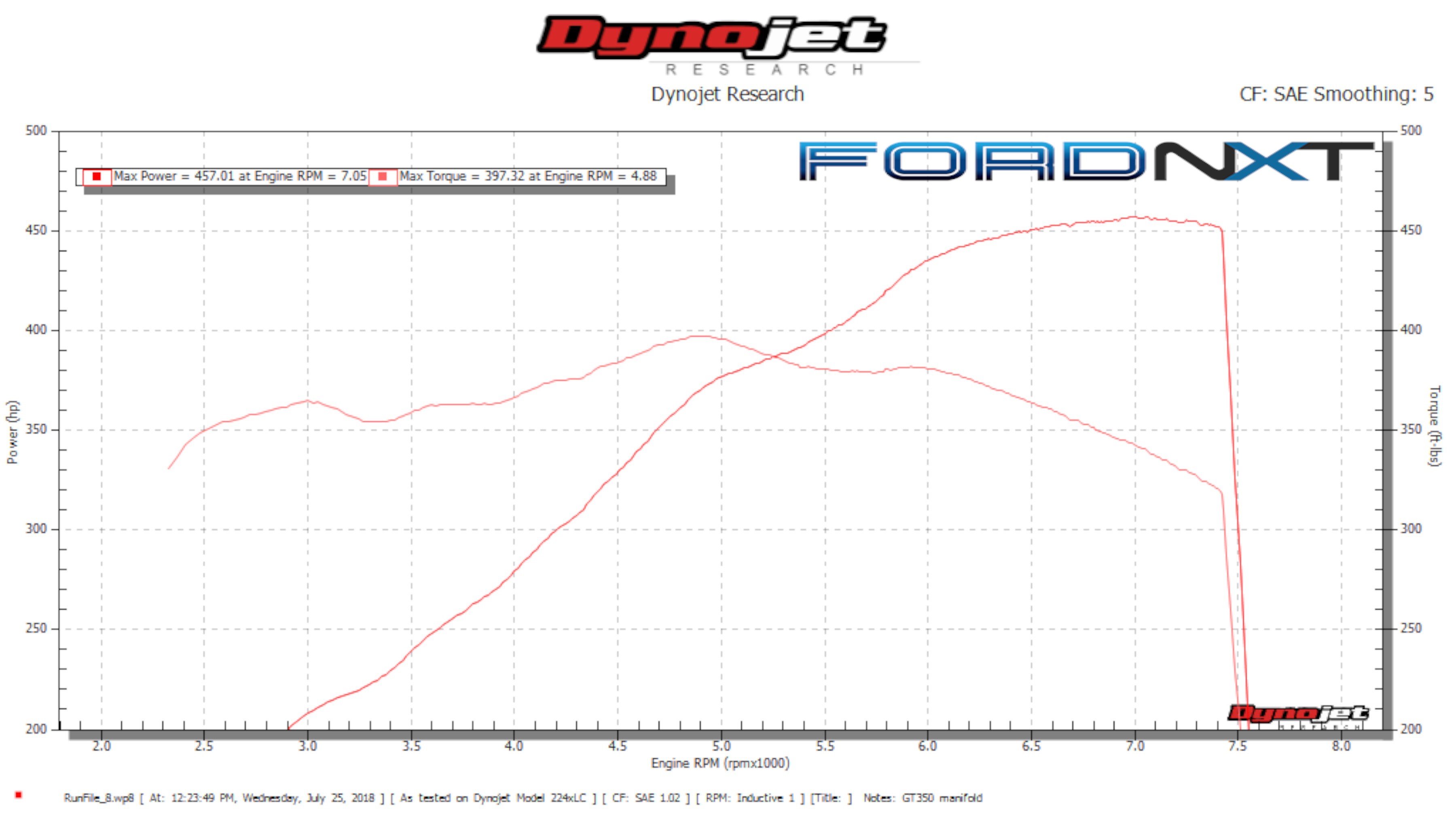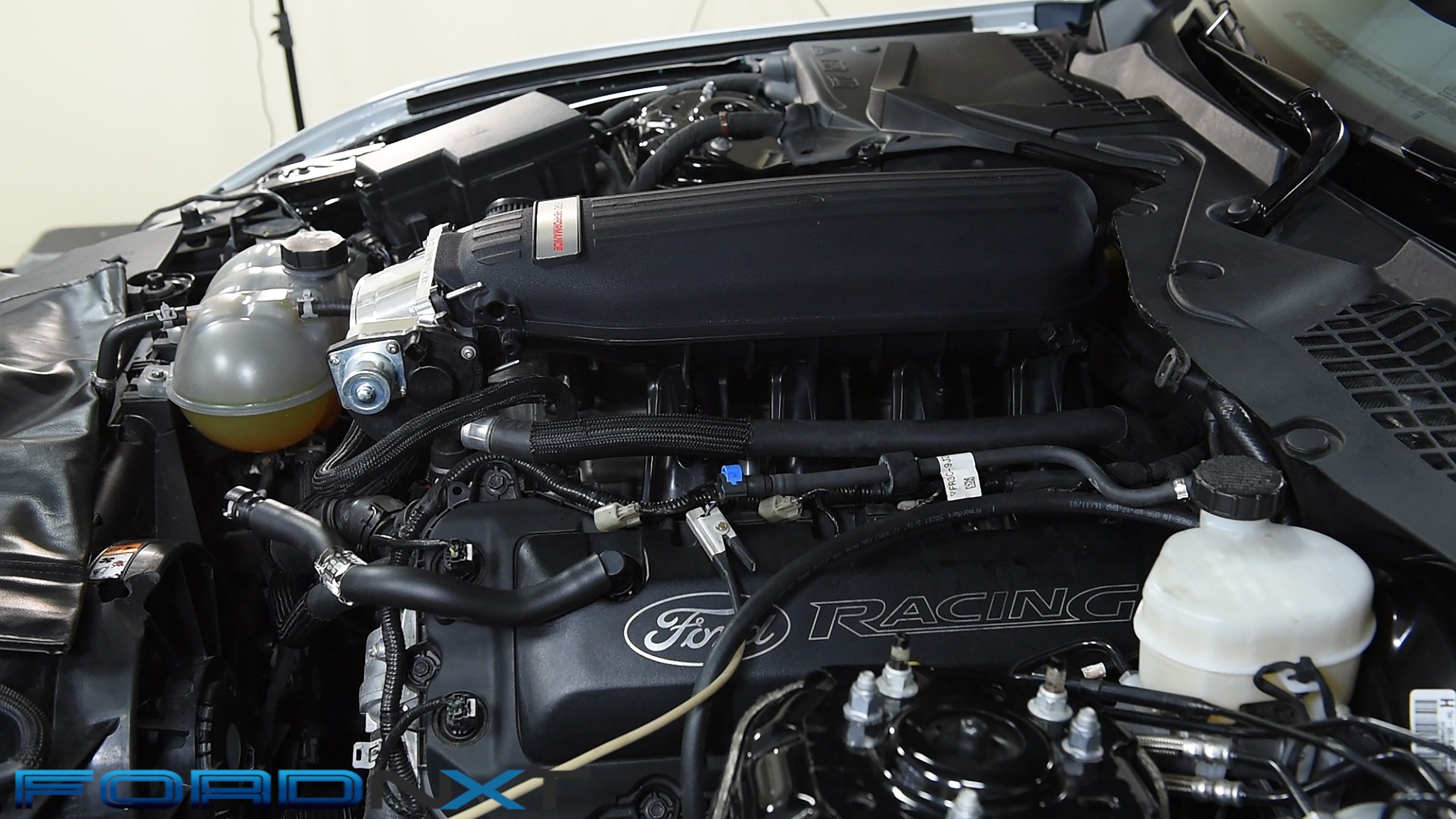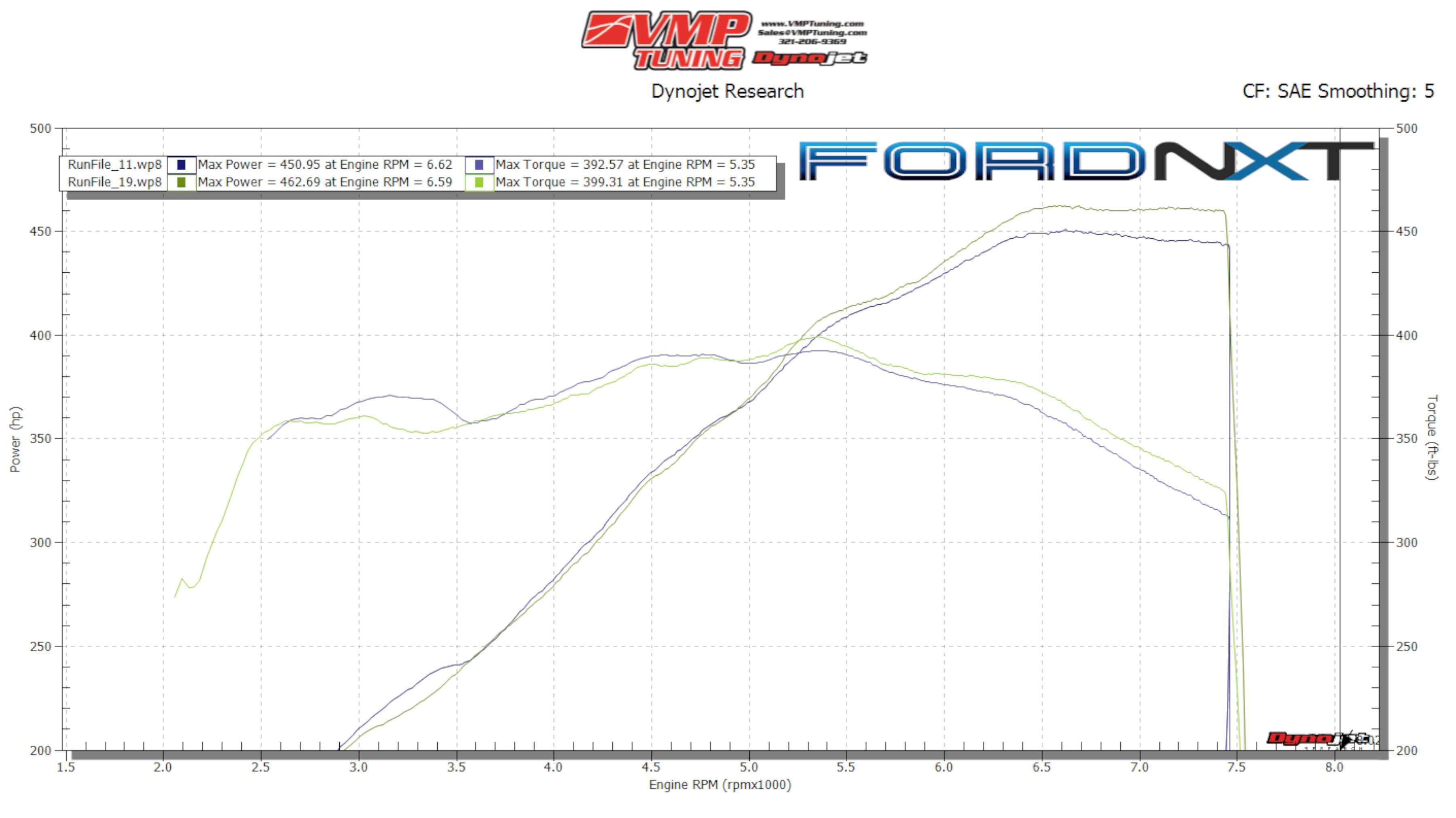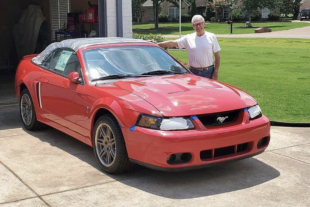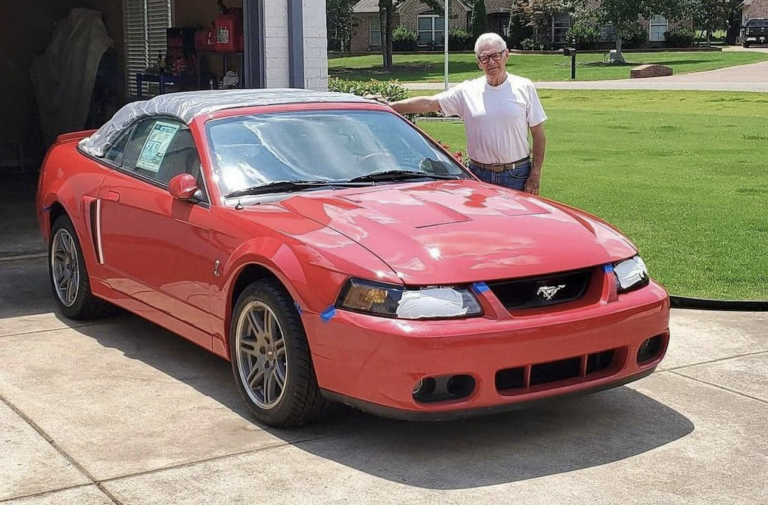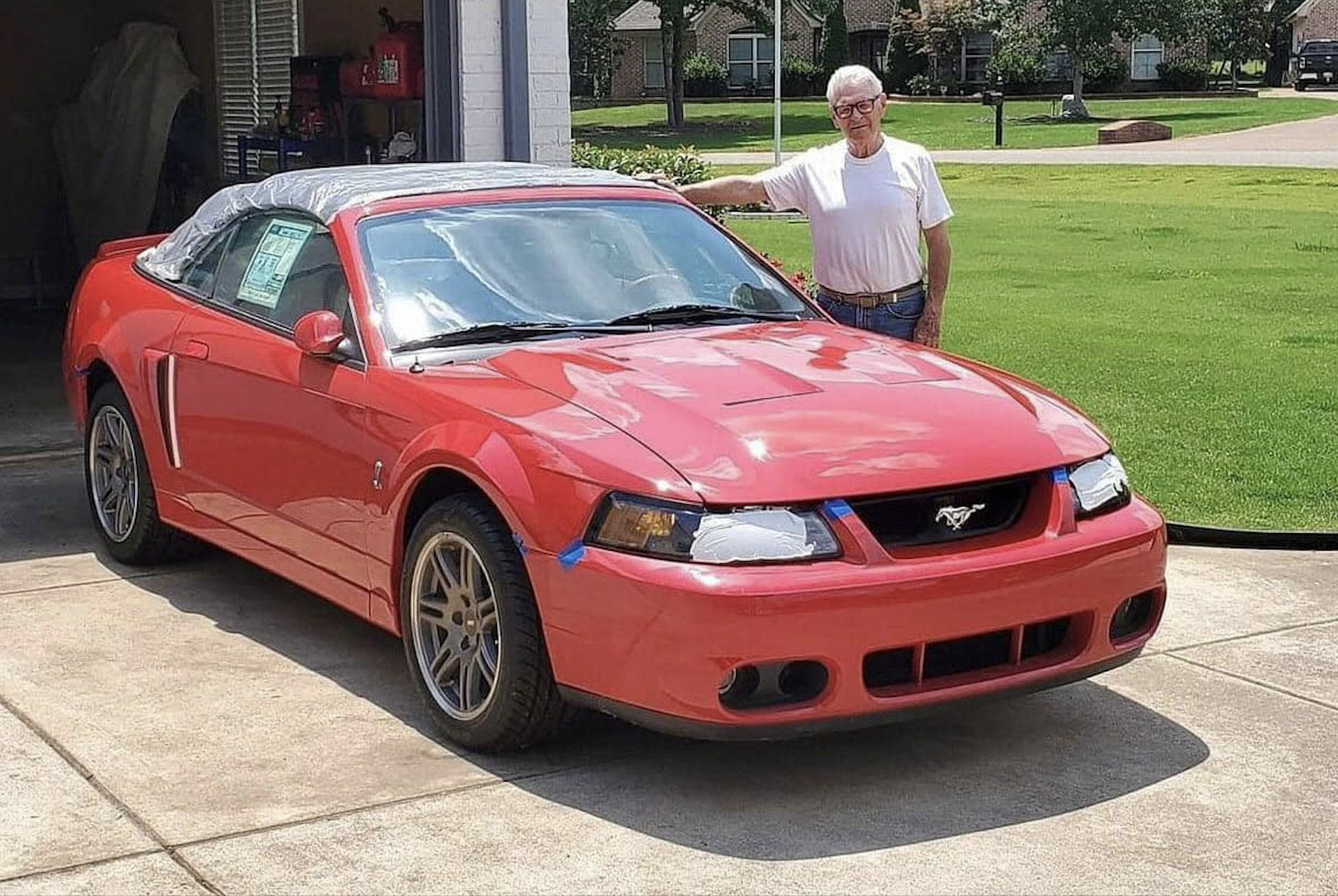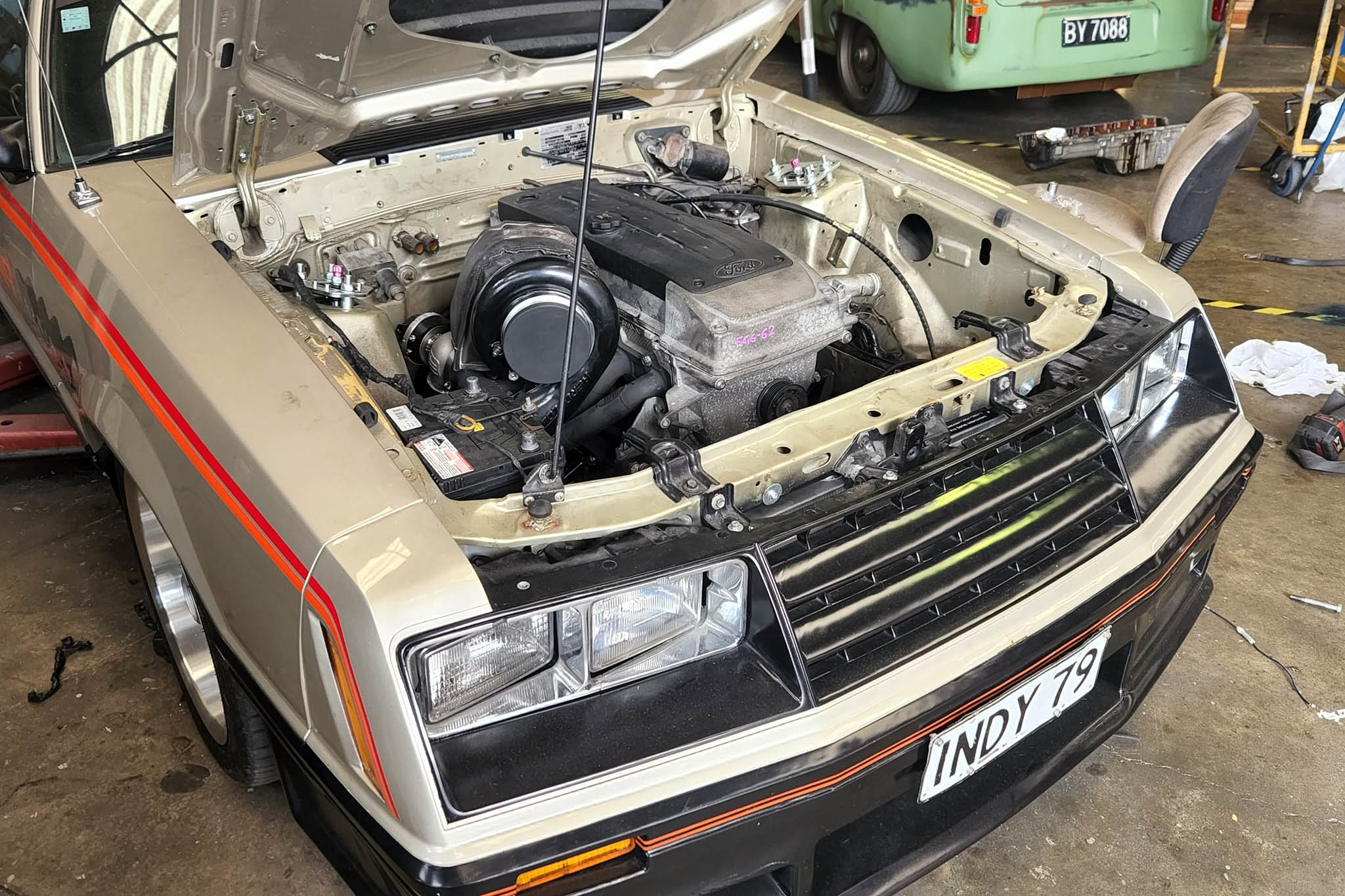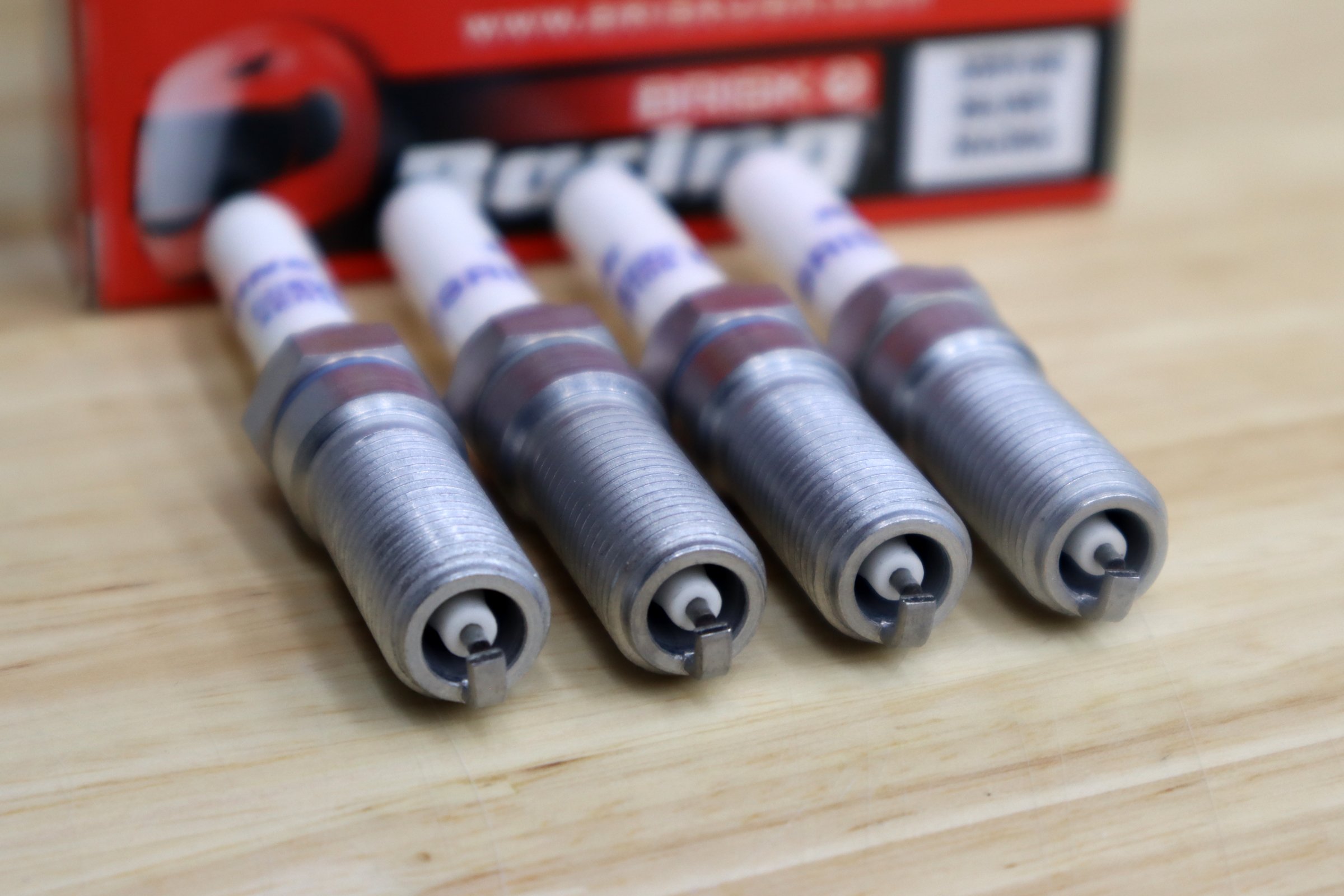From the various factory versions of the Coyote to its spin-off cousins like the RoadRunner and Voodoo engines, there are numerous intake choices readily available for your 5.0-liter engine. To find out how these units compare, the crew at VMP Performance pulled the Gen3 supercharger of the company’s Track Attack 2017 Mustang GT project car and started testing intakes to see which intake offers the best bang for the buck on first- and second-generation Coyotes.
We’ve never seen this type of performance before from a stock part. — Justin Starkey, VMP Performance
The car in question is modded with a set of Dynatech long-tube headers, a JLT Performance cold-air intake, and a Cervini’s side-exit exhaust, but its engine is otherwise stock. For these pulls it burned 93-octane fuel, which was good enough to support 27.5 degrees of total timing.
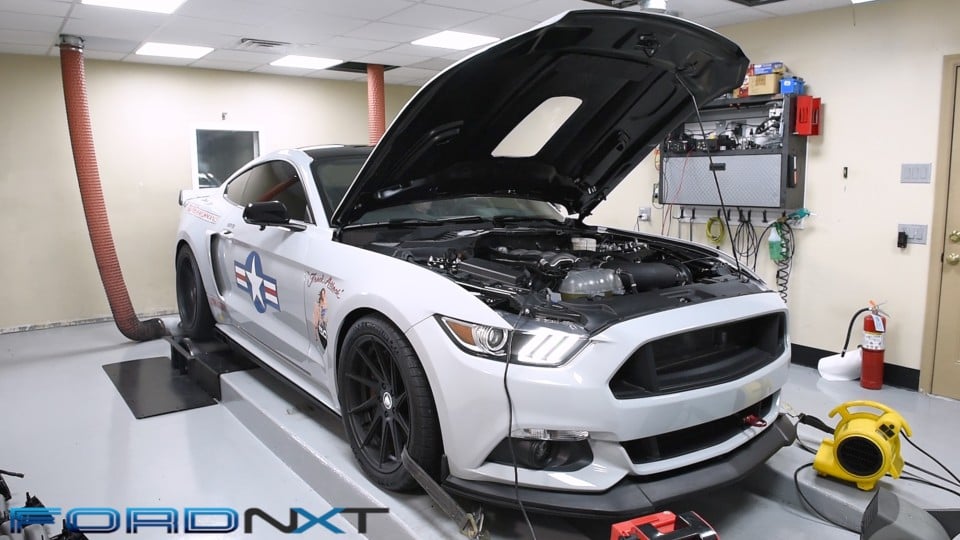
To let a pack of Coyote intake manifolds howl on the chassis dyno, the team at VMP Performance temporarily removed the Gen3 TVS supercharger from the company’s Track Attack 2017 Mustang GT. With 93-octane in the tank, the car hosted six different manifolds and the results might surprise you. (Photo Credit: VMP Performance)
“Our test selection was based on commonly available aftermarket parts that were still OE-style from Ford or Ford Performance. We wanted some options that would retain the factory Charge Motion Control Valves on the 2015-2017 Mustang,” Justin Starkey, President of VMP Performance, said. “There are some sheetmetal intakes that are becoming available for the Coyote, but we saw these as beyond the scope of this test. Those intakes are often necessary for high-boost applications (over 30 psi) where plastic won’t hold up.”
In the end, the roster included a stock truck intake, a stock 2018 Mustang intake, a ported 2018 Mustang intake, a Boss 302 intake, a Shelby GT350 intake, and a Ford Performance Cobra Jet intake. While you might expect the performance-oriented intakes to steal the show, it was a stock part that really impressed. The stock 2018 Mustang intake manifold finished near the top in stock and ported form with 457.79 and 462.77 rear-wheel horsepower respectively.
“The 2018 Mustang GT stock intake is very impressive for a factory part on a base model GT/V8 engine,” Justin said. “We’ve never seen this type of performance before from a stock part. Porting the 2018 Mustang GT intake only makes it better.”
If you are looking for a performance value, the factory 2018 Mustang intake is tough to beat as an upgrade for 2011-2017 Mustangs. Port these manifolds and they really respond, besting even the race-engineered Cobra Jet intake. In VMP’s test the stock 2018 delivered 457.59 horsepower and 392.97 lb-ft of torque at the wheels. With custom porting by Brett Barber at Air Flow Solutions it pushed the performance to 462.77 horsepower and 402.93 lb-ft of torque.
Meanwhile, in deference to its mission, the truck intake fattens up the Coyote’s bottom end at the expense of the high-revving histrionics it is known for, so it’s not really worth considering for a performance application in stock form as it delivered only 453.81 horsepower at the wheels.
“The stock truck intake that we tested, from an ’11-’14 truck, looks to be different than the ’15-’17 Mustang GT intake, but made essentially the same power. Given the opportunity to test again, it would be nice to look at all of the truck intakes, as there are now three versions that have been used from ’11-’18,” Justin said. “All the truck intakes sit a little higher and appear to have longer runners, since hood clearance is not an issue. Possibly porting one could get the best of both worlds in terms of power and torque.”
VMP really did thorough testing, even trying the stock 2011-2014 F-150 intake manifold. As you might expect, its power was lackluster, but its torque was impressive. Swapping on this intake delivered 453.81 horsepower and 413.89 lb-ft of torque.
Surprisingly, the once state-of-the-art Boss 302 took the dubious last-place honors in this test with only 450.95 rear-wheel horsepower, which shows you just how far Ford’s engineers have pushed the Coyote platform.
“The Boss 302 intake is probably the coolest looking of the bunch, but only produces mediocre horsepower,” Justin deadpanned.
The disappointment of this testing was the Boss 302 intake. In its day, this intake was developed for the Coyote’s higher-performance RoadRunner cousin and helped push its RPM and output. On a Gen 2 Coyote, which expanded on those ideas, this intake laid over with only 450.95 horsepower and 392.57 lb-ft of torque.
The latest hi-po factory intake tops engines in both the Shelby GT350 and the Mustang Bullitt, and it performed well with 457.01 rear-wheel horsepower, but was narrowly edged by the stock 2018 Mustang intake.
“The Shelby GT350 intake looks and feels the highest quality of them all, and is the cleanest of them all inside and out,” Justin explained. “It is very smooth inside and feels like quality plastic. It made good power just about everywhere except a little flat spot around 5,500 RPM.”
Given that it was engineered for the high-winding Voodoo 5.2 and it helped deliver higher output to the Mustang Bullitt, the Shelby GT350 intake and matching throttle body is obviously a performer. Adding it generated 457.01 horsepower and 397.32 lb-ft of torque, which was strong, but not quite as strong as either 2018 Mustang manifold.
And speaking of being edged, the real shocker was that the Ford Performance Cobra Jet came in second place to that ported 2018 Mustang intake with 462.69 rear-wheel horsepower, which shows you just how much Ford engineers optimized the Gen 3 Coyote engine.
“The Cobra Jet intake has a very broad and flat horsepower curve, it reaches peak horsepower at 6,500 RPM, and holds it,” Justin said. “Out of all the intakes tested, this was the only one that was purpose-built for a race application. The only downside is less torque at low RPM.”
If you expected the Cobra Jet and VMP TwinJet 67 twin-bore throttle body to top the charts you were almost correct. With this intake in place, the Coyote put down 462.69 horsepower and 399.31 lb-ft of torque. It was better than the stock 2018 Mustang intake, but not quite as good as the far more affordable ported 2018 Mustang intake.
In the end, the ported 2018 Mustang intake not only produced more power than the others in the test, but it also produced more torque than all the manifolds except the truck intake, which was born to build torque.
From the looks of this test, the ported 2018 Mustang intake is definitely the one to beat, especially when you consider that it clocks in under $700. Now we just want to know how these same intakes would rank with boost, but that’s a test for another day.
Porting The 2018 Mustang Intake
[group_caption type="2" images="https://www.speednik.com/files/2018/09/six-coyote-intakes-fight-to-become-top-dog-on-the-chassis-dyno-2018-09-11_20-59-51_107976.jpg, https://www.speednik.com/files/2018/09/six-coyote-intakes-fight-to-become-top-dog-on-the-chassis-dyno-2018-09-11_20-59-54_569334.jpg" /]
If you already have a 2018 Mustang, you are benefitting from a solid induction setup. There really isn’t much reason to remove the factory intake unless you want to go the route that VMP Performance did.
“I would only swap out the stock intake manifold on an 18 Mustang GT for an identical one, but ported,” Justin said.
Knowing the factory unit is a solid performer; he wanted to see just how much it could be improved. Just like the cast metal manifolds used on older cars, these modern, composite intakes can benefit from porting.
“We worked with Brett Barber at Air Flow Solutions on CNC porting the ’18 intake. When he does his porting a few things are accomplished. He smoothes out the opening at the throttle body, the runners, and increases volume where the port meets the cylinder head so there is no neck-down,” Justin explained. “His unique CNC process allows him to do this consistently across eight runners. Yes, you can mill plastic — with the right tooling! There is also a lot of misalignment and flash in the factory ’18 intake where the top and bottom are glued together, so he takes care of that along the length of the runner.”
The results speak for themselves. They are incremental, but they elevate a great intake to the best one tested in this bunch.


